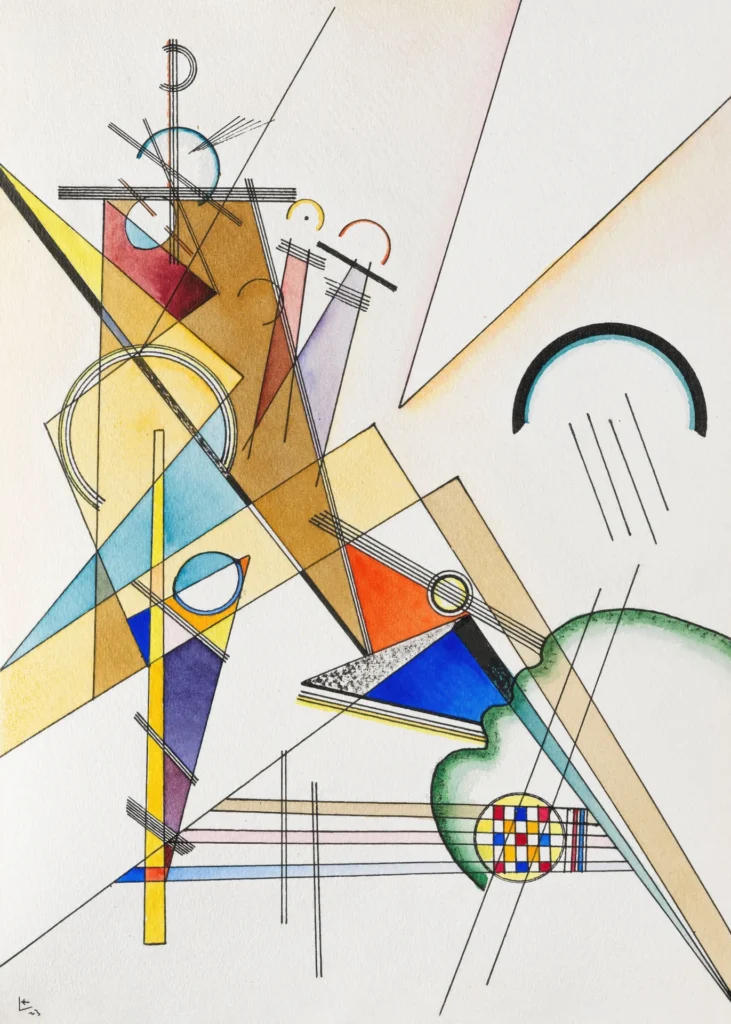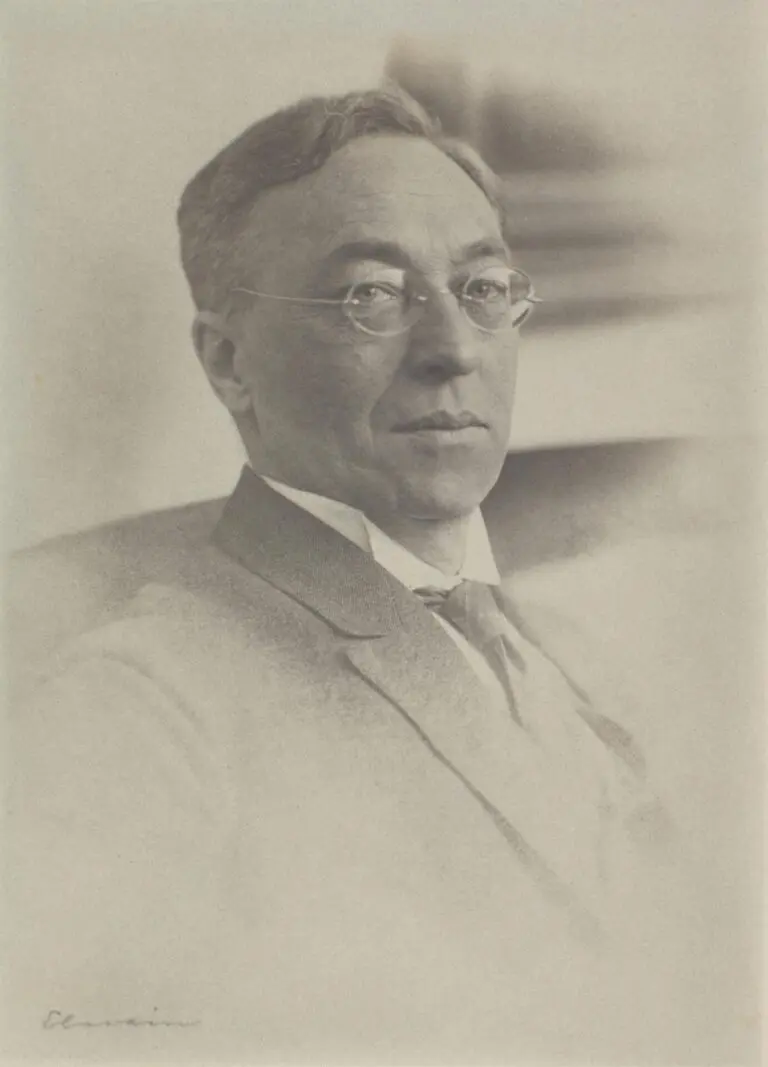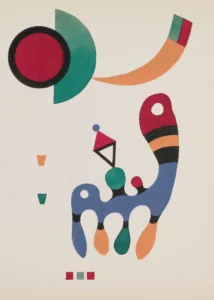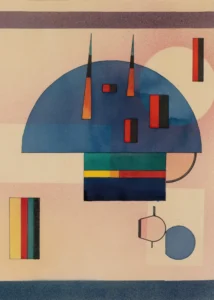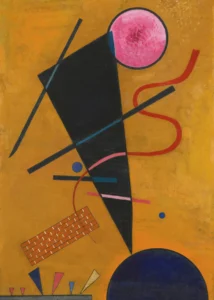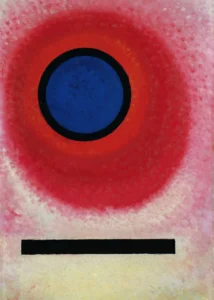Gewebe (1923)
Gewebe, translated as 'Fabric', is a mesmerizing watercolor and India ink piece by Wassily Kandinsky, created in 1923. Characterized by its geometric composition and soft color modulations, this artwork exemplifies Kandinsky's unique approach to abstraction during his influential Bauhaus period. The gentle interplay between color fields creates an enigmatic effect, inviting viewers to engage deeply with the underlying structure.
1923
About the Artwork
Gewebe is emblematic of Wassily Kandinsky's artistic evolution during the 1920s, a time when he was a pivotal figure at the Bauhaus in Weimar, Germany. This artwork embodies his shift towards geometric abstraction, distancing himself from his earlier, more expressionistic style. The title, meaning 'Fabric', reflects the interplay of forms and colors as if they are woven together into a cohesive visual fabric. Acquired by Richard Doetsch-Benziger shortly after its creation and featured in key exhibitions, Gewebe illustrates the innovative spirit of early 20th-century art, where artists sought to redefine the boundaries of visual expression.
Did You Know
Liked what you see? Add it to your collection.
Enjoyed reading? Share it.
... continued
Medium and Technique
Gewebe is executed in watercolor and India ink on slightly structured paper. The dimensions of the work are 36.4 x 25.2 cm (14.3 x 9.9 in).
Style and Composition
The artwork is characterized by its strictly geometric compositions, which were typical of Kandinsky's work during the 1920s. It features clear color fields broken up and extended by a soft modulation of the watercolor along the lines in India ink. The composition avoids sharp optical confrontations, creating an overall effect that is somewhat enigmatic despite its apparent rationality.
Provenance
Gewebe was acquired by Richard Doetsch-Benziger for the Kandinsky Gesellschaft in 1930. It was later sold at an auction by Sotheby's in London in 1974 and subsequently owned by Roman Norbert Ketterer in Stuttgart in 1975.
Exhibitions
The artwork has been exhibited in several notable shows, including 'Das staatliche Bauhaus Weimar 1919-1923' at the Staatliches Bauhaus Weimar and Landesmuseum in 1923, and 'Wassily Kandinsky, Retrospektive' at the Hallischer Kunstverein and Städtisches Museum Moritzburg in 1929.
Value
The estimated value of Gewebe is significant, with estimates ranging from €200,000 to €1,320,000 (approximately $220,000 to $1,452,000), reflecting its importance in Kandinsky's oeuvre and its condition, which is described as unusually fresh and well-preserved.
Historical Context
During the 1920s, Kandinsky was teaching at the Bauhaus in Weimar, Germany, a period marked by his exploration of geometric forms and abstract compositions. Gewebe is a representative work from this period, showcasing his innovative approach to abstract art.




